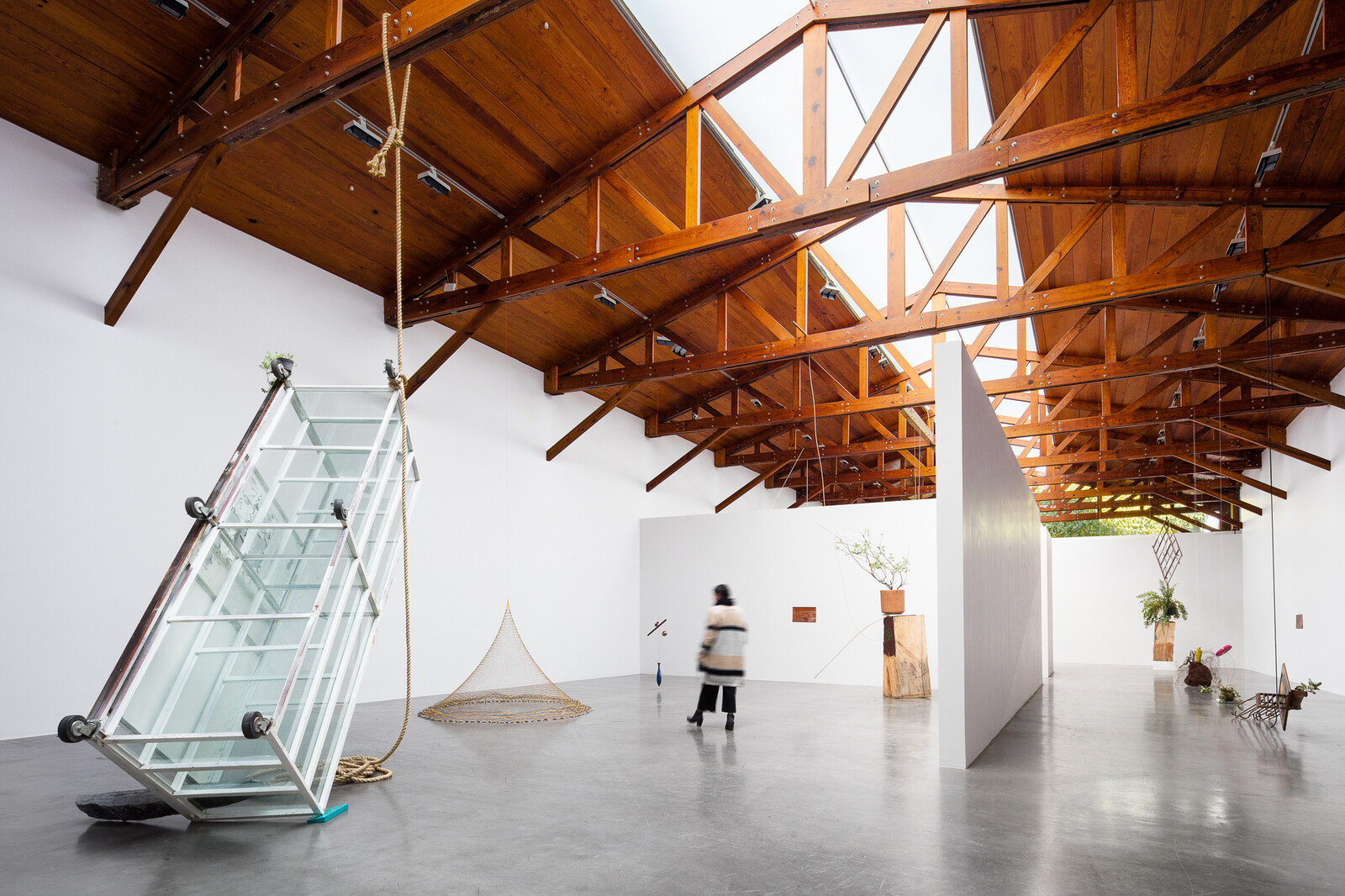Esculturas Pendientes (Pending Sculptures)
February 6–March 16, 2019
Gob. Rafael Rebollar 94, Colonia San Miguel Chapultepec
11850 Mexico City,
Mexico
In his third solo exhibition at kurimanzutto, Abraham Cruzvillegas (b.1968, Mexico City) presents a set of sculptures that explore the various themes, techniques and materials that come to embody his artistic inquiries. Cruzvillegas’ new project sees the artist producing a hanging garden that works at the direct intersection of three core components — identity, collaboration and material re-appropriation. Cruzvillegas’ exhibition examines the creative synergy and potential that is at stake within this triangulation, and the chaotically delicate lines that separate these.
Identity construction is a focal point in Cruzvillegas’s explorations and run throughout the artist’s new presentation at kurimanzutto. The artist takes his own and his family’s biography as reference points, producing sculptures and combining natural life that express his preoccupation with origin, sociability, resilience, and the creativity of individual peoples within the context of their built communities.
Cruzvillegas employs the vehicle of botany to convey understandings and interpretations of his own identity. Through a diverse range of plants found in the pedregales (lava fields) of the district of Coyoacán, south of the city (where Cruzvillegas is from), the hanging garden will utilize the expertise of several botanists to excavate meanings and natural histories from the landscape of the region. The artist develops connections between plant identity and self-identity; through each one Cruzvillegas offers a commentary on his own roots.
Compelled by his desire to understand the true nature of identity, the artist has continued to work with folk art masters from Michoacán since 1993. For this iteration, Cruzvillegas has collaborated with specialists in the craft of maque, a lacquer-on-wood technique that mixes oils and natural pigments used by the P’urhépecha culture. The oldest tradition of this technique was recovered by Martina Navarro and is practiced today in the Taller Saint Phalle, where she is an essential member. In collaboration with Cruzvillegas for this exhibition, this workshop have lacquered objects, such as gourds, trays, and other unpolished wooden pieces that are integrated into the assemblages.
New sculptural works by Cruzvillegas also incorporate materials from his everyday environment: remnants from a house remodeling project, building-related objects left on construction sites, beams, buckets, and rods. By adding prefabricated materials, such as plywood, plastic, and Formica, as well as tezontle rock, volcanic rock, and a plethora of different types of of wood, these meaning-laden substances allude to notions of ecology, economy, industrialization, territory, and animism. He will deliberately re-use the temporary architecture from the previous exhibition at the gallery in an effort to embody the recycling principles and to challenge the possibilities of his own installing process. The show offers the viewer many interwoven possibilities of interpreting and associating meaning, forms, and history among its components.

